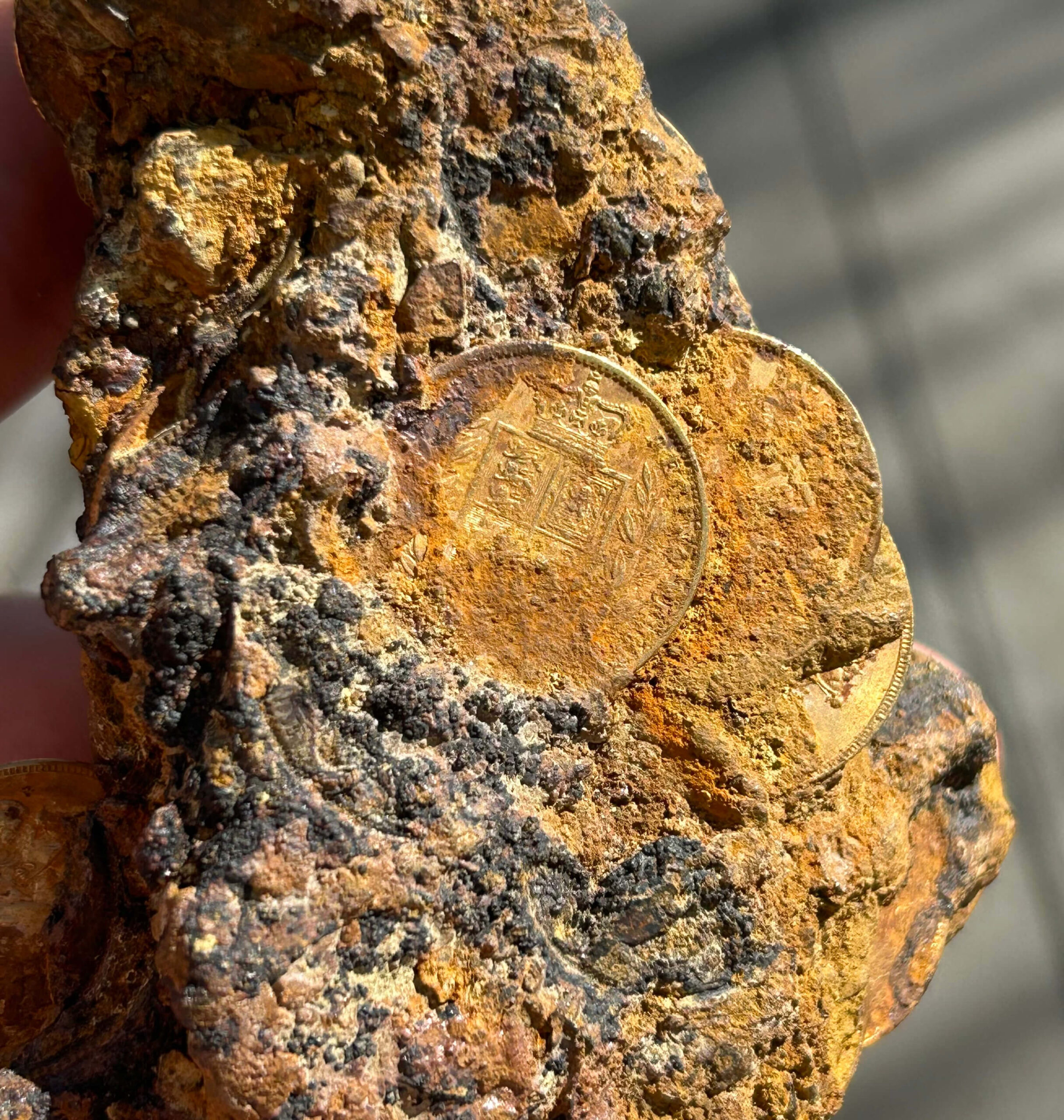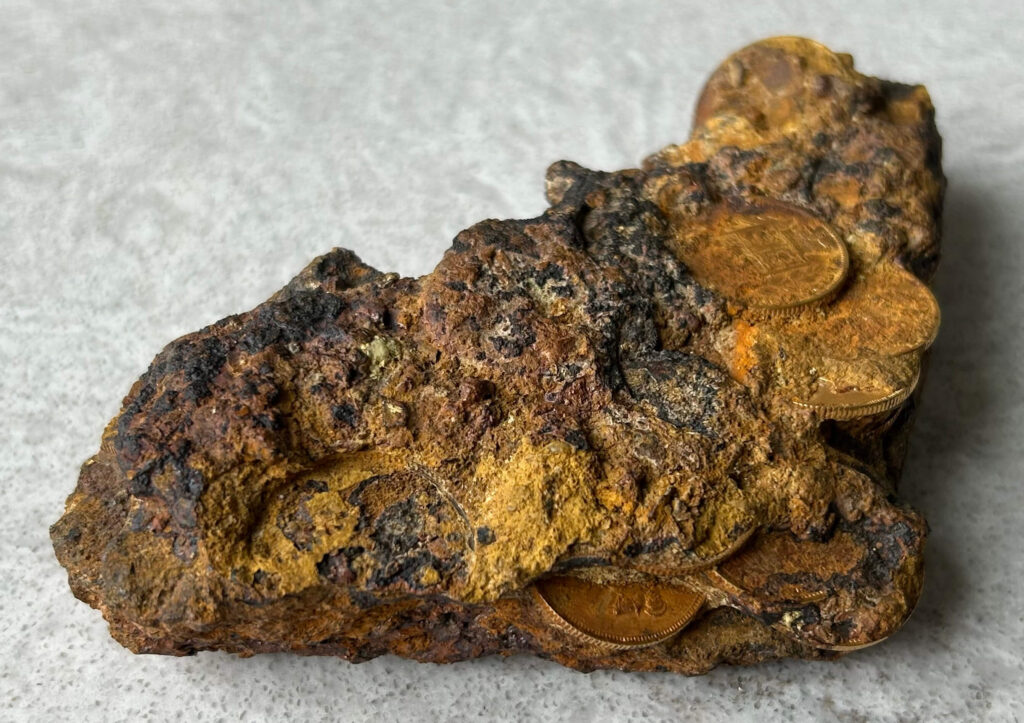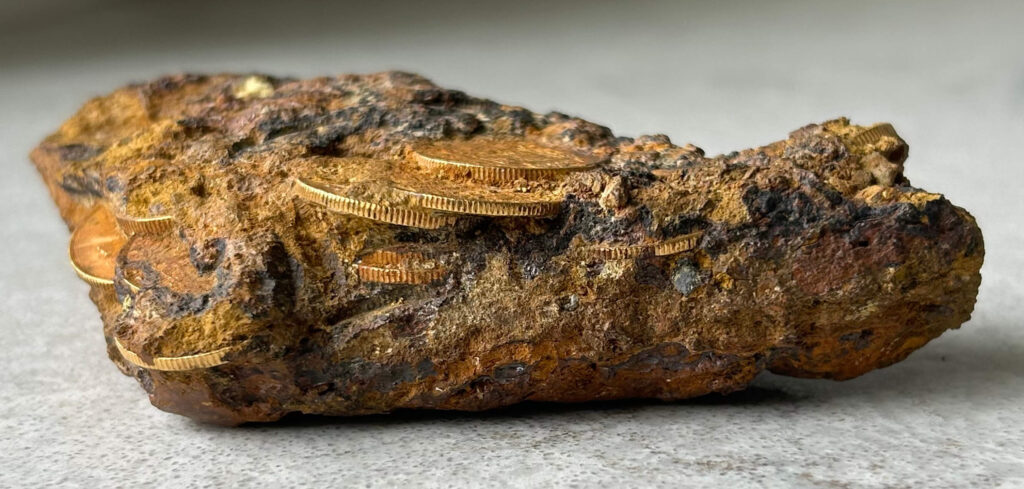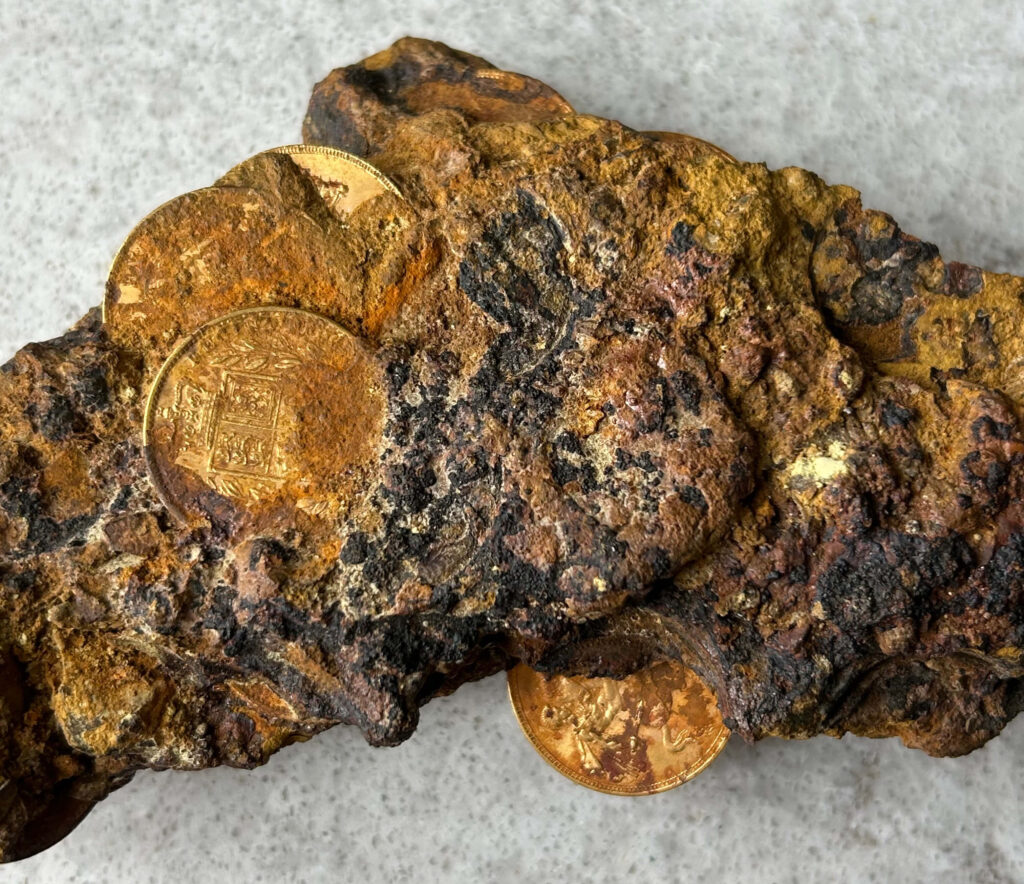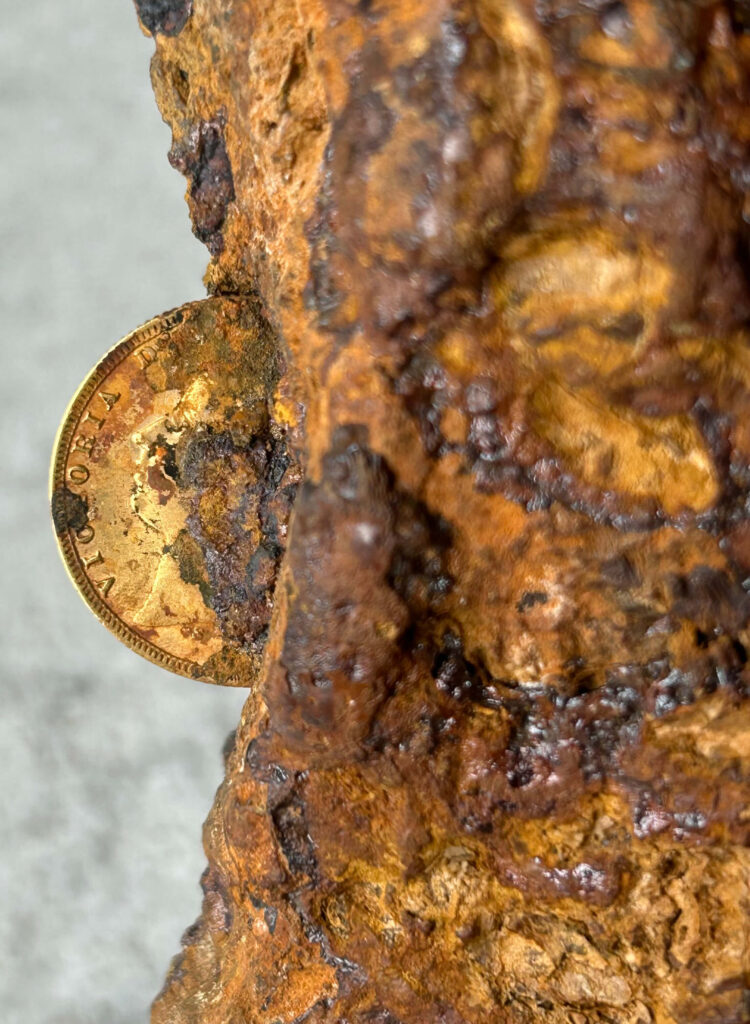Here is a picture of an item that recently crossed my desk. It is a clump (or, officially, an aggregate) that contains about 20 plus coins. We are all familiar with clumps of silver coins from the 1715 Fleet. In fact, we have posted a few images of clumps from time to time. Here, however, we have something entirely different. This clump consists of all gold coins! We have occasionally found a gold coin here and there in a clump consisting primarily of silver coins along with other small items such as musket balls, nails, and other debris. But all gold coins! Never.
When we received these pictures (below), we knew that we had to post this item along with the back story. So, here it is: It was explained to us that the owner obtained this item at an auction a few years ago. Apparently, the item was passed over in the auction and did not sell. The auction house was contacted, and a price was negotiated for the piece. The clump has 15 coins visible, and it is estimated that it contains a total of 20 or so. The coins were part of what is known as the Douro cargo.
The RMS Douro was a British steamship built in 1865. It was used primarily to transport mail, newspapers, and other valuable cargo such as gold and diamonds. The ship regularly ran a route between Buenos Aires and Southampton. After 61 successful voyages, its 62nd trip ended in tragedy. On April 1, 1882, the Douro collided with a Spanish vessel off Cape Finisterre near Galicia, Spain. The Douro sank within 30 minutes, taking six crew members, including the captain. In the decades that followed, treasure hunter Nigel Pickford spent years researching the shipwreck’s location. In 1993, he and fellow explorer Sverker Hallstrom finally discovered the wreck in the Bay of Biscay. In 1995, they successfully retrieved gold bars and coins. The recovered treasure was mostly English and Australian gold sovereigns from the era of Queen Victoria. Some Brazilian and Portuguese coins were also found. Our featured clump of gold coins came from the bottom corner of an iron safe where the coins were stored.
We have never seen an item like this before. This may very well be the only one of its kind in existence. If another does exist, we sure don’t know about it. Regardless, it is something that would make a remarkable display. Special thanks to Josh Roesner for sharing this with us and providing all of the images shown in the post.
